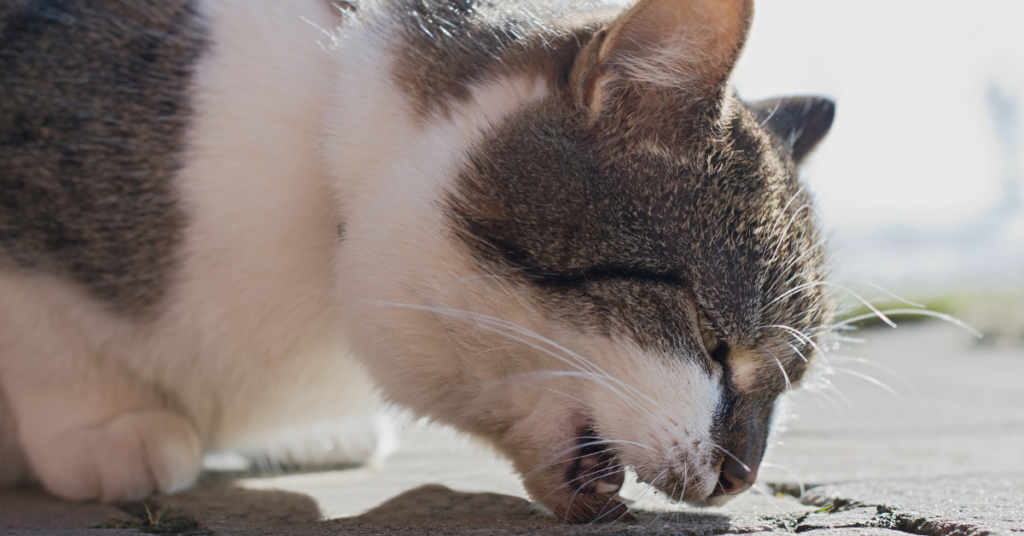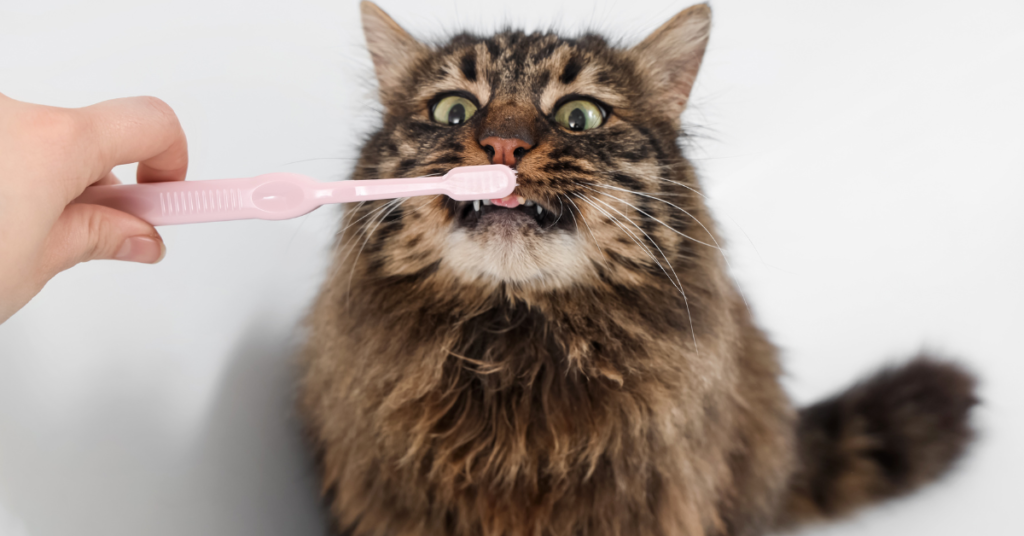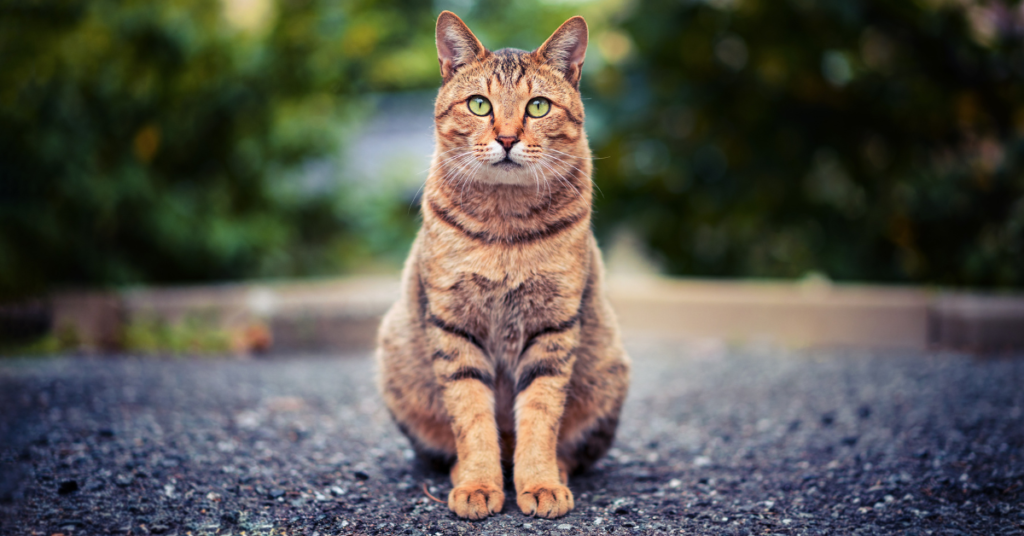Introduction | How to Treat Hairballs in Cats Naturally
For cats, particularly those with long coats, hairballs are a typical problem. Although sporadic hairballs are common, regular occurrences can cause discomfort for your cat and may indicate more serious health problems. Fortunately, you can naturally prevent and treat hairballs without resorting to harsh chemicals or prescription drugs. By using natural remedies, you can help your cat stay healthy and comfortable while avoiding unnecessary medications.
In this article, we’ll explore:
- What causes hairballs in cats?
- Signs your cat has hairballs.
- 7 natural remedies to prevent and treat hairballs.
- When to consult a veterinarian.
By the end, you’ll have a clear action plan to keep your cat happy and free of hairballs.
What Causes Hairballs in Cats?

Cats ingest loose hair while grooming because they are meticulous groomers. Most of this hair passes through their digestive tract and is eliminated in their stool. However, some hair can accumulate in the stomach, forming a hairball. If the hairball becomes too large to pass through the digestive system, your cat will vomit it up.
Common causes of hairballs include:
- Overgrooming due to stress or boredom.
- Long-haired breeds (e.g., Maine Coons and Persians) are more prone to hairballs.
- Seasonal shedding increases hair ingestion.
- Poor diet or dehydration, which can impair digestion.
Signs Your Cat Has Hairballs
While vomiting is the most obvious symptom of hairballs, there are additional signs to look out for:
- Frequent gagging or retching without producing a hairball.
- Loss of appetite or reluctance to eat.
- Lethargy or a decline in activity levels.
- Constipation or diarrhea caused by digestive blockages.
- Coughing or hacking sounds.
If your cat exhibits severe symptoms such as persistent vomiting, abdominal pain, or no bowel movements, seek veterinary care immediately.
7 Natural Remedies to Treat and Prevent Hairballs
1. Regular Brushing

Regular brushing is the most effective way to reduce hairballs in cats. It removes loose fur before your cat can ingest it during grooming.
- How to do it:
- Use a brush suitable for your cat’s fur type (e.g., a slicker brush for long-haired cats).
- Brush your cat 2-3 times a week, or daily during shedding seasons.
- Make brushing enjoyable with treats and praise.
- Pro Tip: Invest in a deshedding tool for long-haired breeds to eliminate excess undercoat.
2. Add Fiber to Their Diet

Fiber helps move hair through the digestive tract, preventing it from forming hairballs.
- Natural sources of fiber:
- Pumpkin: Add 1-2 teaspoons of plain, canned pumpkin (not pie filling) to your cat’s food.
- Psyllium husk: Mix a small amount into wet food (consult your vet for dosage).
- Cat grass: Grow cat grass at home for your cat to nibble on.
- Pro Tip: Look for high-fiber cat foods specifically formulated for hairball control.
3. Encourage Hydration
Proper hydration keeps the digestive system functioning smoothly, helping hair pass through more easily.
- How to encourage hydration:
- Provide fresh water daily in a clean bowl.
- Use a cat water fountain to encourage your cat to drink more.
- Add water or broth to your cat’s wet food.
- Pro Tip: Cats prefer running water, so a fountain can significantly increase their water intake.
4. Use Hairball Prevention Gels

Hairball gels are lubricants that help hair pass through the digestive system. Many are made from natural ingredients like petroleum-free oils.
- How to use:
- Administer a small amount (pea-sized) on your cat’s paw or directly into their mouth.
- Use 2-3 times a week or as directed by the product.
- Pro Tip: Look for gels with added vitamins or malt flavor to make them more appealing.
5. Incorporate Omega-3 Fatty Acids
Omega-3 fatty acids promote healthy skin and reduce shedding, which in turn reduces hairball formation.
- Natural sources of Omega-3s:
- Fish oil supplements (consult your vet for dosage).
- Flaxseed oil or chia seeds (mixed into food).
- Pro Tip: Choose high-quality, cat-specific supplements to ensure safety.
6. Provide Hairball Control Cat Food
Many brands offer specialized cat food formulas designed to reduce hairballs. These foods are high in fiber and contain ingredients that promote healthy digestion.
- What to look for:
- High-quality protein as the first ingredient.
- Added fiber (e.g., beet pulp, cellulose).
- Omega-3 fatty acids for skin and coat health.
- Pro Tip: Gradually transition your cat to a new food to avoid digestive upset.
7. Reduce Stress and Boredom
Stress or boredom can lead to excessive grooming, increasing hair ingestion.
- How to reduce stress:
- Provide plenty of toys and interactive playtime.
- Create a stimulating environment with climbing shelves and scratching posts.
- Use calming products like pheromone diffusers or sprays.
- Pro Tip: Spend at least 15-20 minutes daily playing with your cat to keep them active and engaged.
When to Consult a Vet
While most hairballs are harmless, frequent or severe hairballs can indicate underlying health issues. Consult your vet if:
- Your cat vomits multiple times a week.
- The hairball is accompanied by blood or mucus.
- Your cat shows signs of pain, lethargy, or loss of appetite.
- Your cat is unable to pass stool or vomit.
Your vet may recommend diagnostic tests or prescribe medications to address the issue.
Conclusion

Hairballs are a natural part of a cat’s life, but with the right care, you can minimize their occurrence and keep your feline companion comfortable. By incorporating regular brushing, a balanced diet, and natural remedies like pumpkin or omega-3s, you can help your cat maintain a healthy digestive system and reduce hairball formation.
Remember, if your cat experiences frequent or severe hairballs, consult your vet to rule out underlying health issues. With these tips, you’ll be well-equipped to tackle hairballs naturally and ensure your cat stays happy and healthy.
Did you find these tips helpful? Share this guide with fellow cat owners and let us know your favorite hairball remedy in the comments below! .
Expert Advice on Treating and Preventing Hairballs in Cats
Dr. Sarah Wooten, DVM (Veterinarian and Pet Health Expert)
“Hairballs are a natural byproduct of a cat’s grooming habits, but frequent hairballs can signal an underlying issue. Regular brushing is the single most effective way to reduce hairballs. For long-haired cats, daily brushing is essential, especially during shedding seasons. Additionally, a diet rich in fiber and omega-3 fatty acids can improve digestion and reduce shedding, which in turn minimizes hairball formation.”
Dr. Jennifer Coates, DVM (Veterinary Advisor at PetMD)
“While occasional hairballs are normal, frequent hairballs can indicate gastrointestinal issues or excessive grooming due to stress. If your cat is vomiting hairballs more than once a month, it’s time to consult your vet. In some cases, hairballs can lead to intestinal blockages, which require immediate medical attention.”
Dr. Gary Richter, DVM (Holistic Veterinarian and Author)
“Natural remedies like pumpkin and coconut oil can be highly effective in managing hairballs. Pumpkin is a great source of fiber, which helps move hair through the digestive tract, while coconut oil acts as a natural lubricant. However, always introduce new foods gradually and consult your vet to ensure they’re safe for your cat.”
FAQs About Hairballs in Cats
1. Are hairballs dangerous for cats?
Occasional hairballs are normal, but frequent hairballs can lead to digestive blockages or indicate other health problems
2. Can I use olive oil to treat hairballs?
Yes, a small amount of olive oil (½ teaspoon) can help lubricate the digestive tract. However, use it sparingly and consult your vet first.
3. How often should I brush my cat to prevent hairballs?
Brush your cat 2-3 times a week, or daily during shedding seasons.
4. Are hairball control treats effective?
Yes, many hairball control treats contain fiber and lubricants that help reduce hairball formation.
5. Can kittens get hairballs?
Kittens are less likely to get hairballs because they groom less than adult cats. However, long-haired kittens may still develop hairballs.

1 thought on “How to Treat Hairballs in Cats Naturally: A Complete Guide”